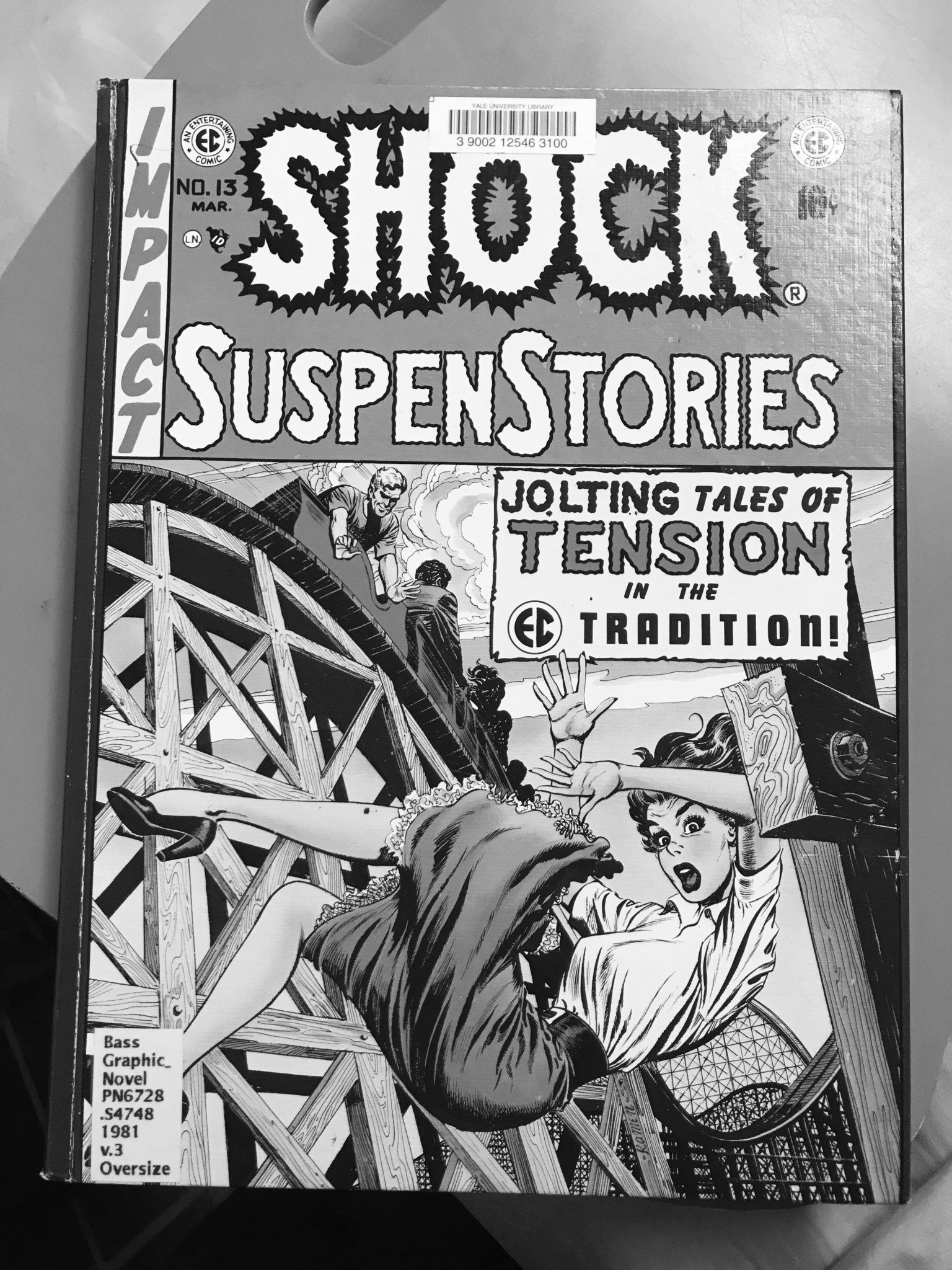
When you think of the ’50s, what comes to mind? Idealized suburbia; commercialized conformity? It’s easy to forget that the decade had a dark, sensational underbelly grounded in comics, pulp magazines and B-movies; that those years were also a breeding ground for the activism that would define the ’60s. Yet “Shock SuspenStories,” a series produced by EC Comics from 1952 through 1955, reminds you on every page.
I acquired my copy of “Shock SuspenStories” in Bass Underground Library. Having adored Charles Burns’s “Skin Deep,” a modern graphic novel that subverts ’50s tropes to shock readers while providing social commentary, I was interested in seeking out some authentic mid-century thrills. I had read that the series had gotten more controversial near the end of its run, so I checked out “Volume 3,” the 1981 anthology that includes reprints of the series’ final stories, in addition to reflections from EC Comics staff and letters from readers. The book, whose cover promises “Jolting tales of tension in the tradition!” was everything I had hoped for. Tonally, it’s a bit like “The Twilight Zone” without the supernatural, or “Black Mirror” without the technology. The thrills and twists are here, but the only monster in the house is human nature.
The comics in “Volume 3” are diverse in circumstance. They star unlucky lovers, cunning children, solemn private eyes and despicable middle-aged men; they unfold in the countryside, in hospitals, at amusement parks, on streets not unlike yours. While they’re all stunning, notable for their gorgeous artistic detail as well as their surprise endings, there are a few standouts. “The Hazing” introduces a poor college student who decides to amp up Red Scare fears at his university in order to win a spot in a rich boy frat; the comic serves as a fascinating portrait of campus life and political strife in the ’50s. “4-Sided Triangle” is gruesome but clever; it depicts a scheming, lecherous farmer punished for his crimes in an accident involving a scarecrow. “The Orphan” is an exercise in the subversion of reader expectations — its mind-bending ending, which revolves around a young girl growing up in an abusive household, is not revealed until the final panel.
Most notable is “The Whipping,” in which a racist white man learns that his daughter is dating a Latino teenager who has moved into their neighborhood. With a group of equally prejudiced friends, he plans an attack on the boy. When the time comes and he strikes in the middle of the night, however, he doesn’t realize that he has caught the wrong person, and is actually whipping his daughter to death. The scenes of conflict between the frenzied father and indignant daughter are painful to read; the dialogues between the racist men are just as disturbing. It’s surprising and encouraging to know that such stories were being told long before “Get Out” revolutionized the social horror genre. Yet at the time, “The Whipping” wasn’t taken well by all readers. In 1954, it landed EC Comics editor William Gaines before the Senate Subcommittee to Investigate Juvenile Delinquency, where he argued that the comic’s harsh language and ghastly ending made an important statement. The anthology includes a transcript of parts of the hearing, as well as letters from readers in response to the story, which will be of interest to fans who prefer a side of history with their suspense.
From front to back, “Shock SuspenStories: Volume 3” is a roller coaster ride, much like the one gorgeously illustrated in its cover art. It’s a quick and sensational read, but far from mindless. Indeed, when read in a Yale common room in 2019, it’s still just as astonishing — and just as relevant — as it would have been to a kid looking for kicks seventy years ago. Next time you’re in Bass, take this off the shelf. Bring it home and let it excite you next time you’re stuck inside on a zero-degree night.
Brittany Menjivar | brittany.menjivar@yale.edu .







